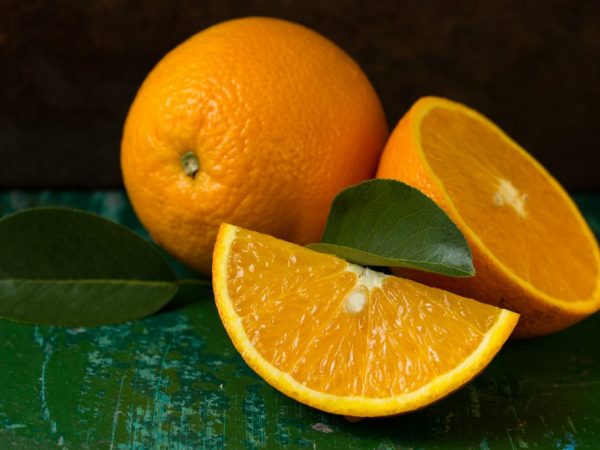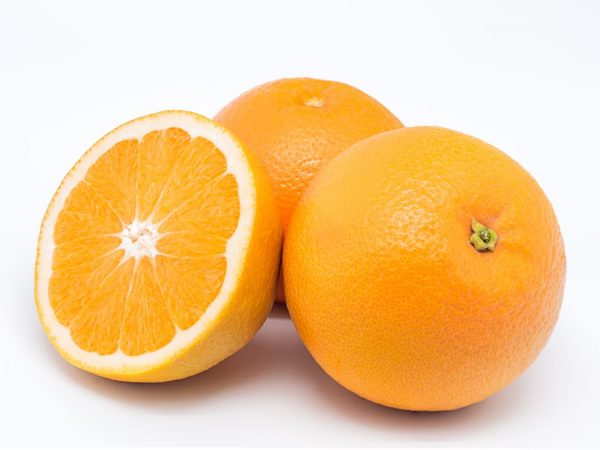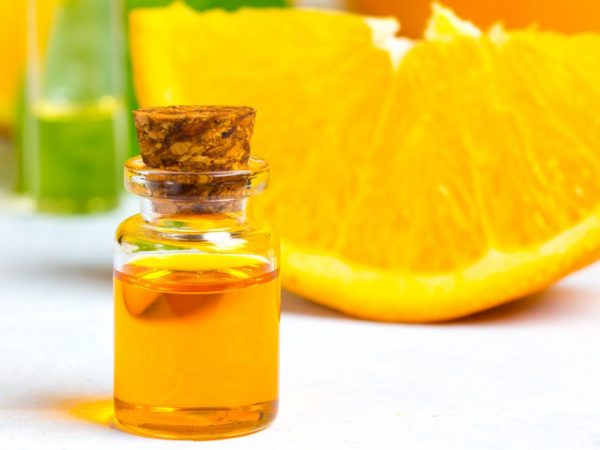Calorie content of an orange and its BJU
Since ancient times, people have used the fruits of the evergreen tree for food to strengthen immunity, improve skin condition. Currently, they are used for weight loss, the reason for this is the low calorie content of the orange.

Calorie content of an orange and its BJU
Orange composition
Juicy orange citrus is a source of vitamin C (60 mg per 100 g of product, which is the daily norm of ascorbic acid for humans). Chemical composition:
- vitamins A, B1, B2, B6, B9, E, H and PP;
- microelements: potassium, magnesium, phosphorus, calcium;
- pectins;
- cellulose;
- phytoncides;
- bioflavonoids (help lower blood cholesterol and blood pressure).
Chem. the composition of the orange is extensive, therefore, it can easily be attributed to the best products that allow you to replenish the reserves of macro- and microelements in the human body.
Even a small orange juicy product contains:
- water - 85%;
- carbohydrates - 8.1%
- dietary fiber - 2.2%
- protein - 1%;
- fat - 0.2%.
At the same time, the balance of BJU looks like this: in 100 g, proteins - 0.9 g, fats - 0.2 g, carbohydrates - 8.1 g.
The carbohydrates in the orange energize the human body, which makes this bright product indispensable on any table.
The benefits of an orange
Due to its composition, the juicy orange fruit is beneficial for the human body, because it contributes to:
- regulation of metabolic processes;
- absorption of iron;
- increasing the elasticity of capillaries;
- accelerating collagen synthesis, which improves the condition of skin cells;
- timely stimulation of the immune system;
- elimination of toxins and toxins;
- strengthening bone tissue:
The substances contained in orange have anti-inflammatory effects.
The fruit is indicated for taking with vitamin deficiency, liver diseases, cardiovascular system, metabolic disorders in the body.
Most of the beneficial fibers and trace elements are concentrated not in the pulp, but in the white partitions and zest.
The skin of this product consists of two layers:
- top rind with a pleasant citrus aroma;
- soft spongy white shell rich in pectin.
Orange harm

Oranges are contraindicated for stomach ailments
Bright juicy fruit with a high vitamin C content is contraindicated:
- persons with hypersensitivity to citrus fruits (allergy sufferers),
- fearful diseases of VCT (especially gastritis, ulcer),
- diabetics (due to the high sucrose content).
Calorie content of an orange per 100 g
The energy value of an orange is equal to 40 kcal per 100 g of product (this indicator varies, depending on the type of juicy fruit, the type of its provision: juice, fruit with peel, without peel, candied fruit). The glycemic index is 40-50 units, like tangerine (the lower indicator is typical for the fetus, and the upper one for freshly squeezed juice).
The energy value of an orange weighing from 150 g is 60-70 kcal, while the zest alone accounts for 16 kcal.The calorie content of 1 orange without a peel of the same size is equivalent to 50 kcal. The considered indicator (orange calories) is comparable to the identical one for 1 piece of an average apple.
The calorie content of orange products: juices, candied fruits - varies.
Calorie content of orange juice and fresh juice
Fresh juice is a freshly squeezed juice, the calorie content of which varies depending on the type of the selected product and the degree of squeezing. The average energy value is 40 kcal per 100 ml of juice.
This value is not significant, but differs from the indicator indicated on the boxes of packaged juices: there are 45-55 kcal per 100 ml. Such a high value is due not only to the excellent recipe for making the drink, but also to the addition of sugar to it.
Energy value of candied fruits
Candied fruit means orange peel soaked and boiled in sugar and dried in the microwave. The calorie content of such a product is 3000 kcal per 100 g, while the calorie content of an orange is 40 kcal / 100 g.
Ingredients:
- oranges - 1 kg;
- water - 5 l;
- sugar syrup - 100 ml.
The zest from the peeled orange is soaked in water and allowed to stand for 3-4 days. To prevent the orange zest from souring, it is necessary to periodically change the water in the container with the zest. After 3 days, the zest is taken out, placed in a saucepan with water and sugar syrup, boiled for 1 hour. After - let it brew, covering the pan with a lid for another 2 hours. Then the product is taken out and dried.
Calorie content of orange oil

The oil has anti-aging properties
The value of oil is that it:
- used as a bactericidal agent;
- promotes the early tightening of shallow wounds;
- has a rejuvenating effect;
- promotes the elimination of toxins and toxins from the body.
The energy value of the essential oil from orange is 890 kcal / 100 g, while the calorie content of the fruit is 40 kcal / 100 g. The indicator is high, but the product is used in minimal volumes, so you should not be intimidated.
Daily rate
Having dealt with the calorie content of an orange per 100 g, its beneficial properties and contraindications, it is easier to determine the daily dose for a person. An adult, in order to replenish the supply of vitamins and minerals, is allowed to use 1-2 pcs. medium size, or 1-2 tbsp. freshly squeezed juice, or 25-30 g of candied fruits.
Jam or preserves do not need to be consumed in large quantities: no more than 60-80 g per day. There are few calories in an orange, but the finished product contains a large amount of sugars.
The daily allowance for children is calculated based on many indicators, such as the child's weight, age, activity regimen, etc. A competent answer to the question: "How many oranges should an adult and children eat per day?" will be given by a doctor (pediatrician and therapist).
Summarizing
the calorie content of the product is low, so you should not keep track of calories when eating an orange. You can safely eat fruit in small quantities every day, if there is no allergy to citrus fruits, there is no diabetes and the diseases of the gastrointestinal tract are not aggravated. If you consume this product, the orange peel will go away quickly.


